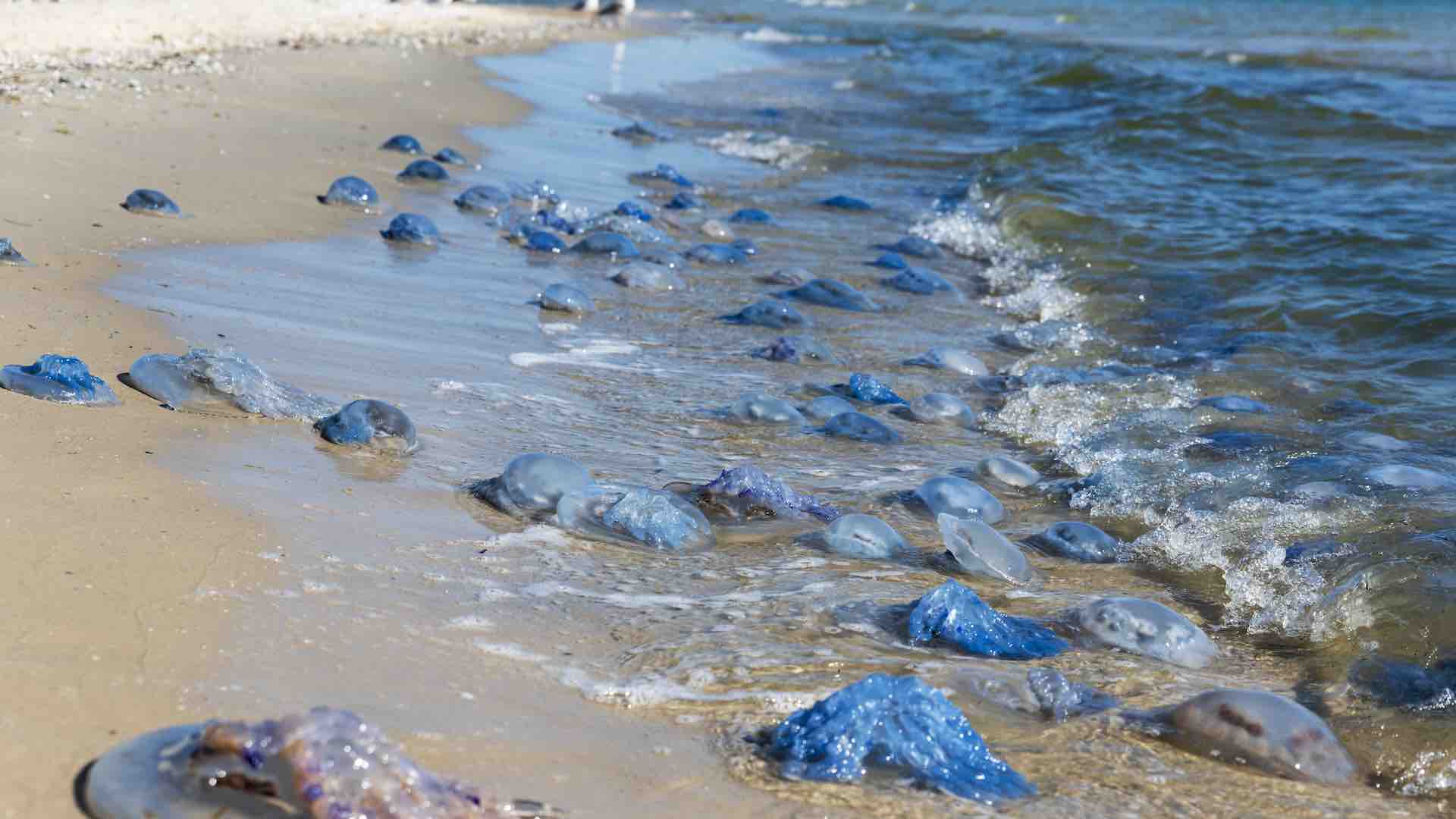MENA Newswire News Desk: Thousands of venomous Mauve Stinger jellyfish have appeared along Cornwall’s coastline in a rare, extensive beaching event stretching across 30 miles, from Falmouth to St Austell. The unusual influx of these Mediterranean species into UK waters is raising concerns among both beachgoers and environmental experts, with specialists pointing to rising sea temperatures as a potential driver behind this phenomenon.

Known scientifically as Pelagia noctiluca, the Mauve Stinger jellyfish are distinguished by their vibrant pink and purple coloring and bioluminescent glow. However, their allure is tempered by a venomous sting capable of causing significant skin irritation, painful rashes, and, in severe instances, nausea. Typically, these jellyfish are confined to warmer Mediterranean waters, making their appearance on British shores in such numbers a notable and unexpected event.
The Cornwall Wildlife Trust has issued public warnings, advising people to exercise caution and avoid direct contact with the jellyfish, as their stings remain active even after washing ashore. According to the Trust, the scale and geographic reach of this event are unprecedented for the UK, where Mauve Stingers generally appear only in small numbers. This widespread arrival has led to increased concerns about environmental changes affecting marine biodiversity and local ecosystems.
Experts from the Marine Conservation Society and marine ecologists, including Dr. Laura MacKenzie, have highlighted that the warming seas, driven by climate change, may be causing shifts in marine habitats. Warmer sea temperatures potentially disrupt the jellyfish’s usual environment, pushing them northward. “This surge is a clear signal that climate change is impacting marine species,” Dr. MacKenzie stated. She added that such migrations are becoming more frequent, underscoring the need for close observation from both scientists and the public as these patterns evolve.
Local reactions have been mixed, with many beachgoers sharing photos and warnings on social media about the jellyfish clusters, while some are simply fascinated by the spectacle. Cornwall Council, in collaboration with environmental groups, is monitoring the situation and has begun placing additional signage along affected beaches, cautioning visitors and swimmers to remain vigilant.
While jellyfish strandings are not unheard of along the Cornish coast, this particular event marks one of the largest Mauve Stinger occurrences in recent history. A similar, though less extensive, event was recorded in 2015 when south-westerly currents brought a smaller cluster of Mauve Stingers to these shores. However, with climate change impacting marine ecosystems on a larger scale, experts suggest that such incidents may become more frequent in the future.
As Cornwall faces these environmental shifts, the situation underscores the growing influence of climate change on marine ecosystems, emphasizing the importance of continued research and public awareness to adapt to these emerging realities and protect local biodiversity amidst changing global conditions.
